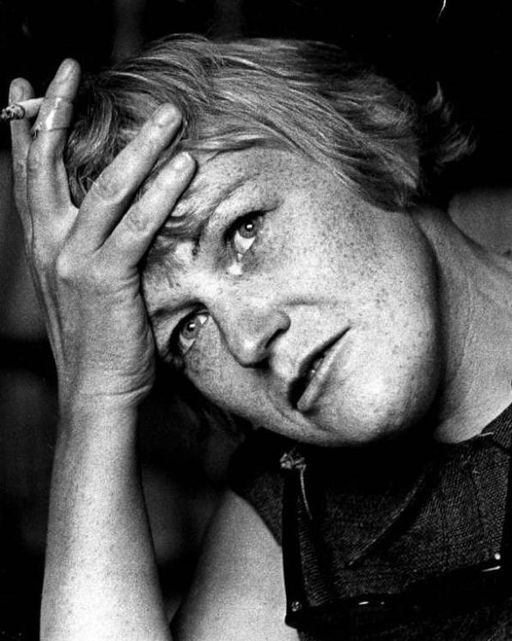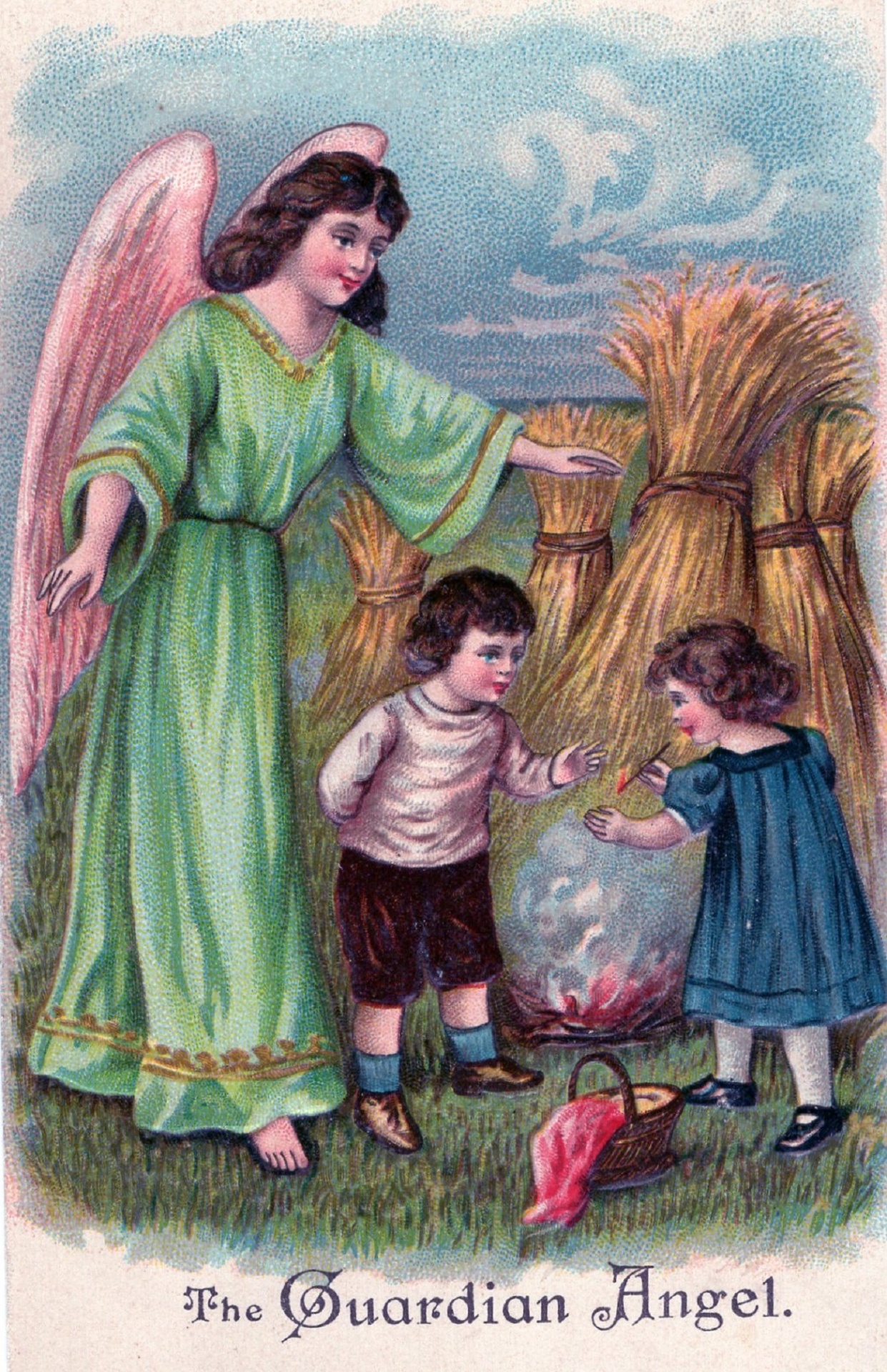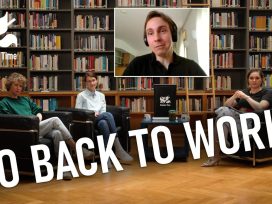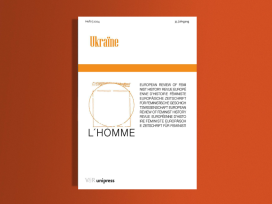In the 1960s, young Scandinavian poets – many of them women – began to investigate the theme of the reproductive workplace in their writing. They explored the subject from within those mostly invisible spaces where cooking, cleaning and child minding are done, creating a body of poetic text that rendered hidden domestic, reproductive work visible and tangible. This alone amounted to a small revolution. The literary pieces I have selected here, written mostly in the last three decades of the 20th century, offer new insights into hidden spaces. There are many examples to choose from and I have focused on just a handful of the most sharp-sighted observers.
Let me begin with Inger Christensen’s poem ‘Alphabet’ (1981) and her reflections on the mundane business of potato peeling, a routine household task which comes to be progressively associated with a vision of nuclear explosion. The presence of the atomic bomb haunts the poem from its opening lines, which invoke the image of apricot trees. The hot glow of the fruit, with its hard ‘pit’ or core, conjures instant connotations: apricots are ‘nuclear fruit’. Then, abruptly and inexorably, detonation becomes a stark reality as the words Hiroshima and Nagasaki appear on the page. Here, the poetic style differs from other writings in Christensen’s Collected Poems.

Operation Plumbbob, Shot Boltzmann, Nevada Test Site. Photo from the Federal government of the United States via Wikimedia Commons.
‘Alphabet’ focuses unwaveringly on the bomb and its effects, in language that describes events as soberly as a government White Paper. It makes no allowances, opens up no escape route as the dead are counted. The poet appears to embrace the idea that cool sobriety is essential to grasp the enormity of the suffering that has been caused. Facts must be confronted head on in order to make real both the agony of others and a degree of violence far beyond anything humanity has hitherto experienced. It is an argument familiar from Susan Sontag’s book Regarding the Pain of Others(2003). ‘Alphabet’ articulates the case poetically in the startling deixis which follows the body count:
I’m in my kitchen
peeling potatoes; water running from the tap
almost drowns the children’s voices
in the yard.
Children’s calls to each other
almost drown the birds
singing in the trees
and the songs of the birds
almost drown the whispering of the wind
in the leaves.
The whispering of the leaves
though quiet
almost distracts from the stillness
of the glowing sky.
Its glowing light is
almost a fiery aura
like that of the atom bomb,
at least a little
The lines are paced with words like ‘almost’, ‘at least’, ‘a little’, as the poem makes a tentative connection between Hiroshima, Nagasaki, and the speaker in the kitchen peeling her potatoes. The language does nothing to trivialise the manufactured mass-murder machine that is the atomic bomb. The link Christensen makes between the apricot-orange radiation emissions that illuminated the skies over Hiroshima and Nagasaki, and the experience of that most commonplace of Nordic activities – potato peeling, quashes the notion of the bomb as something unreal or incomprehensible, making it all the more terrifying. It is a wild political gesture to search for lines of communication between potato-peeling, reproductive work that is simple but life-sustaining, and the exceptional negation of all life that is the atom bomb.
Reproductive or productive?
Any domestic labour that might be termed ‘reproductive’ is all but absent from male-dominated, patriarchal literature, as well as from writing focused on the subject of work in general. Even today, caring tasks such as cleaning and cooking, pregnancy and birth, or looking after children and elderly people, are regarded as too dull and ‘private’ to merit public attention. When, in the 1960s and 1970s, women writers turned their attention to labour in the home, their narratives were not read as accounts of proper work but rather as stories about personal, specifically female experiences. Their literary testimonies were accepted as reasonably important, but dismissed as irrelevant in the grander context of historical events or class struggle.
This devaluation presented a problem that demanded serious analysis. Mariarosa Dalla Costa and Selma James’ classical polemic The Power of Women and the Subversion of the Community (1973) and Silvia Federici’s Wages against Housework (1975) stand out as influential examples of writing on the subject. Their publications served as catalysts for the International Wages for Housework Campaign (IWFHC), a global network based especially in Britain, North America and Italy. Its key aim is to achieve equal rates of pay for both reproductive and productive work.
Rather, the intention behind the campaign is to make women’s work seen as real work, as important as manufacturing cars. Women don’t want to be held to calculations of precisely how much to charge for caressing the cheek of a sick child, or hoovering the sitting room. What concerns them is the fact that division of labour has made their work invisible and marginalized. Homemakers and carers introduce a perspective on productive and reproductive labour that Karl Marx failed to take into account. The traditional, historical division of labour cannot be maintained forever, even though women may remain the child-bearing sex.
In her epoch-making examination of the persecution of witches, Caliban and The Witch (2004), Federici makes a connection between gender-determined division of labour and ‘original accumulation’. According to Federici, witch-hunts were directly linked to the transition from late feudal to early capitalist forms of social structure. Capitalism as defined by Marx (to whom Federici refers while amending his argument along feminist lines) begins with an ‘original accumulation’ of capital and its subsequent correlates: the extensive privatization of arable fields and common land such as woods and wetlands. It goes hand in hand with the establishment of trading based on money rather than barter, with a waged labour force and, consequently, a ‘free market’ in which the fundamental rule is to buy cheaply and to sell as expensively as possible.
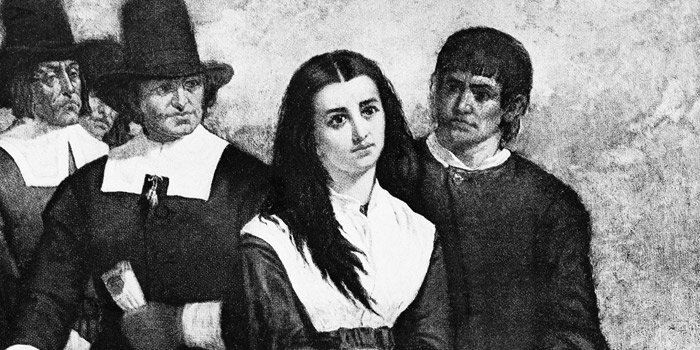
A black-and-white portion from the painting Witch Hill (The Salem Martyr) by Thomas Satterwhite Noble. Via Wikimedia Commons.
‘Original accumulation’ brought with it a division of labour and the limitation of reproduction to a defined group – women – who then became subject to further, draconian controls. Given the historical backcloth to the persecution of witches, the conclusion must surely be that witch-hunting was not a sudden outbreak of madness, as is widely believed. Instead, it should be seen as an early stage in the development of the capitalist-patriarchal order, in line with the aim of controlling reproduction and waged labour in a system that would not only cement the division of reproductive (unwaged) and productive (waged) work but also form the basis for new patriarchal norms.
Women were excluded not only from the communal work-place but also from common, shared spaces. Instead of enjoying access to natural assets, women became living raw material: goods to be traded on the market. Towards the end of the 17th century, the process was complete. Now, stereotypically wild and threatening ‘witches’ who needed ‘taming’ were replaced by another constructed representation of femininity: the angelic housewife and mother, who gently fulfils her tasks in the safe setting of the home. Although dominant, this image clearly did not eliminate its dialectical counterpart, the demonic representation of womanhood.
Broadly speaking, this outlines the historical process as systematised by Federici, as well as the repressed background against which we all struggle to achieve a change in our relationship with the planet. From an eco-feminist point of view, as explained by Vandana Shiva for example, we should be demanding the de-capitalisation of agriculture as well as a new approach to the division of labour and the assignment of value to different forms of work. These are the keys that will help us unlock a sustainable society.
Federici’s analysis can be related helpfully to Christensen’s writing, alongside other examples of women’s literature from the 1960s and 1970s. The proposal to make reproductive work visible and allocate value to it – giving it both financial and social worth – is radical, indeed revolutionary. It emphasises the unfairness of the current division of labour and ways in which it promotes inequality. In a 1971 review of Kirsten Thorup’s poetic prose It’s Daisy today, the critic Hans-Jørgen Nielsen grasped this point, while also failing to understand its implications.
Putting out the rubbish
On the stairs she spots a small damp cardboard lid
And bits of tomato and eggshell and she steps out into the street and then enters a gateway
just next to the main staircase
and into a long passage and arrives at the door to the yard and opens it and
she is in the yard and
all 3 bins haven’t got the lids on and are brimful and she leaves her bag
next to 10-12 other paper or plastic bags that lie next to the rubbish bins and she looks down at the bags
The lines quoted above are drawn from a section of It’s Daisy Today entitled ‘Maria goes downstairs to the yard with a bagful of rubbish’. They describe an activity integral to the sphere of domestic work, endlessly recurring yet invisible. The characters populating Thorup’s book are equally devoid of specific traits. Instead, their identities emerge as static, even empty, almost interchangeable.
‘In this collection, all is externality, dead pores’, Nielsen comments in his review of It’s Daisy Today, written for the Danish newspaper Information. ‘Time fails to impart any exact order to the text.’ His remarks offer an excellent insight into Thorup’s short prose passages with their mixed-up foci and suspension of unity of time and place. It is not clear where we have been placed geographically – it could be Italy or Copenhagen. Nor do we know whose voice we are hearing: it could be Maria’s, Carlo’s, Rita’s or somebody else’s. Nielsen adds that the book is a statement of ‘a description of a condition’ and, in that context, notes its feminist mission:
The female characters and their world form the centre of gravity in this work. In our society, women are regarded as things by definition. They are subjected to objectification twice over. This book is about what this state feels like. Radical ladies who argue in favour of developing a branch of psychiatry specifically for women may be able to find more in this book than I have been able to show.
It’s Daisy Today poetically addresses the experience of being a woman ‘subjected to objectification twice over’. On the one hand a woman is ‘regarded as a thing’ – someone destined to carry out alienating work, as Karl Marx might have put it. Equally, she exists in a state of immanence – of being present as an unchanging element – relative to the transcendence of men.
In Simone de Beauvoir’s classic analysis of the patriarchal order The Second Sex (1949), the male holds the place of the transcendental subject because of his capacity to overcome physicality, and think both systematically and rationally. Hence, he can engage in policy-making and philosophy. The female, meanwhile, is framed by the assumption that she is trapped in her body. She is controlled by feminine reproductive biology and viewed as incapable of acting rationally to promote the commonweal. Consequently, she is in no position to engage in philosophical discourse. This is the representation on which the patriarchal order is founded.
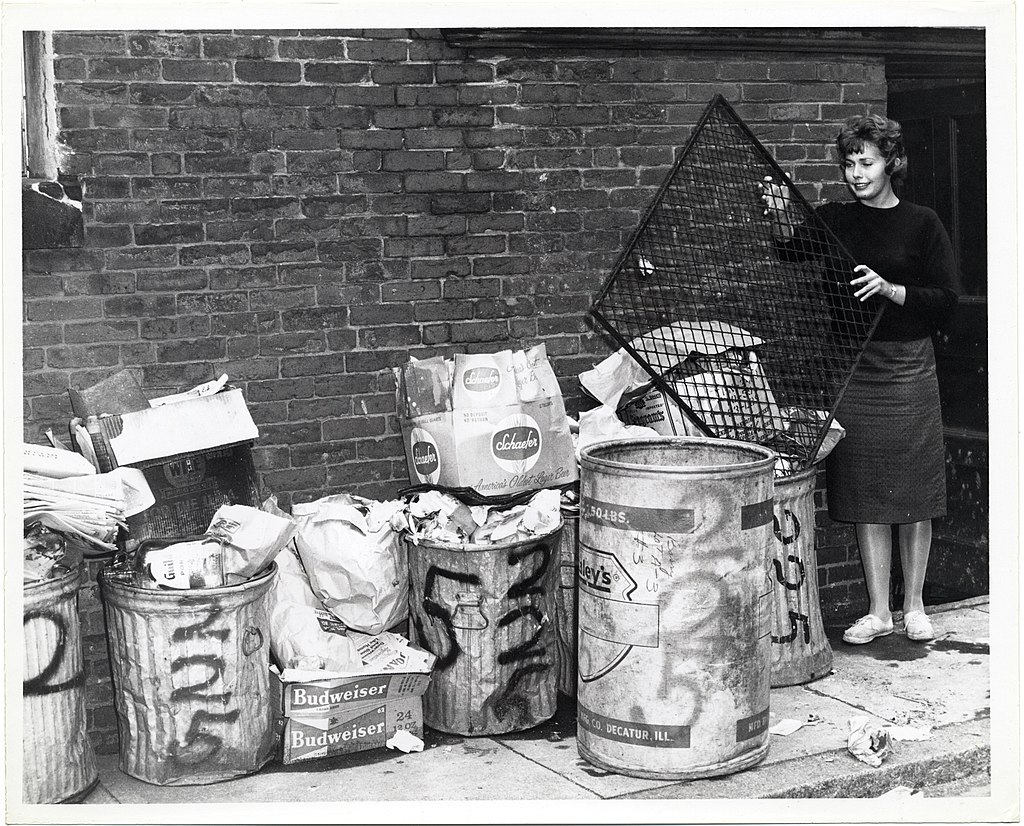
Woman places trash into a bin. Photo from the City of Boston Archives from West Roxbury, United States. via Wikimedia Commons.
Thorup’s book demonstrates something that transcends the ‘double objectification’ of women by making the reality of reproductive work fully visible. In the passage which recounts how ‘Maria goes downstairs to the yard with a bagful of rubbish’ the elements that make up the act of carrying a rubbish bag down the stairs are placed paratactically side by side, linked by the recurrent conjunction ‘and… and… and… and… and’ – a device that mimics the repetitiveness of reproductive work. The rhythmic repetition is affirmative, insistent and demonstrative, but above all offers a minutely observed description of an unremarkable activity. Bits of a tomato, broken eggshells, and a sodden cardboard lid are given a life of their own and acquire the status of ‘vibrant matter’. While relevant to later, neo-materialist stages in the developmental history of feminist theory, they also stress the marginalized person’s sensitivity to objects and life-forms on the peripheries of daily existence.
Writing about It’s Daisy Today, Nielsen makes the point that it may be very well to create a ‘current status report’ on ‘alienation twice over’ but it is also to aim low:
In a critique of the ideological stance taken by the writer, one might argue that captivity is described as a definitive state with no socially mediated escape route. But the poem ‘Spring in Peking’ which forms part of the text is straightforwardly utopian. The locality alone suggests the underlying message.
If we overlook the vistas opened up by images of spring days in Peking, It’s Daisy Today fails to offer Nielsen any hope of another world, or any pointers towards how capitalist rule might be overturned. He finds it lacking in any kind of revolutionary agenda or hope. Despite his sympathies for Thorup’s project, Nielsen finds nothing worthy of comment in it other than the theme of alienation. He approves of the intent to make unseen, reproductive labour visible and tangible. He understands that it is a real, true and valuable form of work. In his view, Thorup’s writing consequently deserves to be shown off as an upmarket book issued by a well-established publisher, prompting its reviewer to make generous use of the many long, foreign words he knows. But It’s Daisy Today is revolutionary literature in the same sense that the demand for proper wages for cooking and child-minding is revolutionary. A focus on the repressive consequences of the existing division of labour should not be restricted to those Nielsen classified as ‘radical ladies who argue in favour of developing a branch of psychiatry directed at women alone.’
Out and about at the supermarket
We need meat for supper, and cold meat for sandwiches, and eggs and a pair of tights, she said and David thought he’d buy a bottle of wine. Karla came to a halt in front of the fruit & veg and she couldn’t remember if she was supposed to buy apples and they walked along and David put a bag of prawns in the trolley. What about some ready-made meatballs and we cook them for supper tomorrow, they’re nicer hot, Karla said and looked for some. How boring, David said. He fancied a bit of steak and rummaged in the cool counter.
‘So, we’ll have steak,’ Karla said and she put a chunk of beef in the trolley and a packet of sliced pork roll and a packet of sliced salami and looked for mayonnaise and Frans stood next to her. He was holding a bag of mixed bonbons, and David put tinned pineapple in the trolley and, soon afterwards, jars of pickled gherkins and cured herring, and a tin of chocolate milk and they finally joined a till queue. And Karla put a bar of hazelnut chocolate in the trolley.

Supermarket in 1964. Photo by James Vaughan from Flickr.
Karla shops for food she believes to be healthy, time-saving and inexpensive: apples and ready-made meatballs. David goes by whatever appeals to him, without troubling himself about vitamin content, cooking times or cost. He buys wine, prawns, steak, chocolate drink. Karla gives in. She is seduced by a chocolate bar – which must surely be a purchase she fancies, rather than one that’s in line with her household budget or any intention to lose weight.
The passage illustrates precisely a problem inherent in the gendered division of labour: the conflict of interest between men and women as they relate to reproductive work, even when it’s assumed to be a joint enterprise. The excerpt quoted above is about shopping and cooking, but it could just as well have been child-minding or cleaning. In Baby, Thorup conveys recognizable everyday scenes, while the paratactical listing of the commonplace (though not random) elements that shape her verbal imagery, produces an almost tactile, sensory or haptic effect. Karla and David are consumers rather than producers, trapped in the late-capitalist, consumerist-driven cycle.
From the 1960s onwards, notably in the writings of Vita Andersen and Sonja Åkesson, the theme of the reproductive sphere was increasingly dominated by its late-capitalist, consumerist context which readers often found hard to recognize as implicit social critique.
Looking good
In the 1970s, Vita Andersen’s poetic anthology Safety addicts, and her collection of short stories Shut it, just look cute, were talked down for their alleged lack of lyricism and focus on banalities that should remain private. Torben Brostrøm described Andersen’s writing as ‘no line break prose’ while Dan Turell wrote pejoratively about ‘menstrual poetry’. Both ignored the connection with pop art techniques characteristic of both Andersen and Åkesson’s writing, and the cutting precision with which they expose an engine of consumerism designed only to generate desire. Here is a short extract from a classic Andersen text: ‘She looks good’:
She walks along the street in her lunch break
no coat on just carrying her handbag
she looks at herself in the shop windows
she looks good
the tight jeans fit perfectly round her bum
she wants to buy something
she thinks that when she gets back home
she and the kids will have a nice evening
and she’ll maybe have a go at repainting the hall
it’s so dark
she had painted it Hawaii yellow
to make it look brighter
she’ll repaint one day when there’s time
she has seen a hall like that
in Better Living
One possible reading of Andersen’s poem is that it is about an enslaved woman in thrall to the male phallic gaze, while held captive by late-capitalist market strategies aimed at provoking a compulsion to buy things. Later, we learn that she is lonely, and resorts to drinking port and eating a Mars bar once her children are asleep. It would be wrong to diminish the sadness felt by Andersen’s characters. Their unhappiness is real; they are burdened, alone, depressed, abandoned and desperate for love.
Yet it is the phrase ‘Hawaii yellow’ that brings this poetic passage to life, along with the ‘Mars bar’. Both are pop art constructs that encapsulate the poet’s sense of the consumer’s ambiguous position. Mass-produced objects, used daily and not intended to be seen as art, emerge with graphic clarity and impact, reflecting the conflicted desires that drive the late-capitalist economy. The woman is obviously ‘held captive’ by the power of advertising, but her desire to conform and participate is genuine. Those tight-fitting jeans are as cool as they are attainable and, in the West, anyone can buy a Mars bar or a pair of jeans – even if it’s on credit.
Acquisition and the quiet life
Sonja Åkesson’s Price is a collection of poems about gendered consumerism, constructed around newspaper and magazine cutouts which are juxtaposed to describe a consumer society that is, in Jenny Tunedal’s words ‘directed at the housewife, expected to manage the kitchen, cook well and stake her all on love. She should hide her curlers under a cute lace cap, dispense with that unattractive martyr’s halo and stop troubling her little head with politics’.
One key poem in the book is entitled ‘Fantasy Sausage’. It is an extended montage of slogans, advertising and quotes from magazines – witty, sarcastic and fun. Yet it communicates a sense of intense claustrophobia and draws attention to the performance criteria that bombard the housewife in consumer capitalist conditions. The format, with its broken lines and use of capitals, is reminiscent of Gertrude Stein’s book of prose poetry Tender Buttons (1914) – the first work in world literature fashioned around the accessories of the female world. In a way reminiscent of Thorup and Andersen’s writing, Åkesson’s everyday objects emerge in shapes that are both tactile and innovative:
Woman desires male boss
Pig wants companionship.
Would you like to have us as Christmas prezzies?
I spy with my little eye
NEW CARS
The trolley is fun. And so handy.
A chair for the water – a must-have,
absolutely.
IMAGINE YOURSELF WEARING THESE BOOTS
Åkesson also wrote graphic, concrete poetry but that is not the reason why her work has attracted interest in recent years. Women writers from the 1970s were subjected to highly negative scrutiny from critics who collectively failed to grasp the significance of literature created inside spaces where reproductive tasks were performed. This is true even of Åkesson, one of the best writers of this genre, who effectively spells things out for her readers. Her breakthrough came with the important poetry collection Domestic Peace (1963) which includes the poem ‘A question of marriage’, now considered a classic. Here are the opening lines:
Be White Man’s slave.
Sometimes White Man nice, yes sure thing,
vacuum floors and play card games with children
weekends
White Man lose his Fucking temper
He swear use bad words
Many days
White Man cannot stand untidy.
White Man cannot stand fried Foods.
White Man cannot stand Stupid sentence.
White Man into terrible Fit
Stumble on children’s boots.
Today, equating slavery with humiliations inflicted by a white domestic tyrant on his white housewife is bound to appear ethically questionable. But the poem’s unflinching irony exposes, in a series of consecutive scenes, the total marginalization of reproductive work. Humour does nothing to detract from the impact.
The potato and the self
Åkesson’s Domestic Peace also includes a piece entitled ‘Autobiography: A Response to Ferlinghetti’, which is a work as personal as Lawrence Ferlinghetti’s acclaimed poem ‘Autobiography’. Åkesson was a great admirer of Beat poetry, but her ‘response’ – which can be read as hypertext – is by no means uncritical of the American writer’s celebrated work. It is worth comparing the opening lines of Ferlinghetti’s poem with Åkesson’s. Ferlinghetti begins as follows:
I am leading a quiet life
in Mike’s Place every day
watching the champs
of the Dante Billiard Parlor
and the French pinball addicts.
I am leading a quiet life
on lower East Broadway.
I am an American.
I was an American boy
Åkesson’s depiction of her own life subtly dents the underlying complacency of the speaker in the original poem:
I lead a quiet life
Spending my days at home
in Drottninggatan 83A.
Blowing children’s noses
Polishing floors and copper pots
Cooking sausages and mash
I lead a quiet life
not far from the underground station.
I am Swedish.
I was brought up in Sweden.
‘Mike’s Place’ becomes an address in Stockholm. Watching billiard games and pinball machines is replaced by the cleaning of floors, washing up pots and pans, cooking sausage and mash, and wiping children’s noses. ‘Lower East Broadway’ has become a street ‘not far from the underground station’. The form of the two poems is practically identical, but unproductive living has been exchanged for the reproductive kind, exposing Ferlinghetti’s self-absorbed sophistication.
The most eye-opening and radical display of the force inherent in introducing the reproductive sphere into poetry comes later in Åkesson’s poem. The tone ceases to be playful and cheerfully ironic, and becomes full of pain:
I ran out into the early dusk
And longed to reach through the sky
with my hand
But hurried back home
In case the potatoes burned.
I see a similarity
between me and potatoes.
These groping shoots
In the faint cellar light
But mind, shield them from blows
Shield them from the cold.
Here is in the corresponding passage in Ferlinghetti’s text:
I marched up Fifth Avenue
blowing on a bugle in a tight platoon
but hurried back to the Casbah
looking for my dog.
I see a similarity
between dogs and me.
Dogs are the true observers
walking up and down the world
thru the Molloy country.
Åkesson’s first noteworthy change is a reversal of the ‘similarity’. In the lines ‘I see a similarity / between me and potatoes’, she has inverted the emphasis in Ferlinghetti’s ‘I see a similarity / between dogs and me’. The dog catches Ferlinghetti’s eye first, then he considers himself. Åkesson looks at herself, then contemplates the potato. The starting point and the target of the analogy are switched. In Ferlinghetti’s poem, the male speaker makes an observation about the dog from his own perspective. ‘Dogs are the true observers’: in other words, dogs are like the narrator. In contrast, Åkesson’s version allows the potato to tell us about the ‘I’ who longs to reach out to the sky but instead hurries home, remembering the potatoes might burn.
The imperilled potatoes also turn the meaning away from the speaker’s fear of failing to provide a family meal towards broader implications of the image. These can be grasped only by those familiar with the predispositions and biological responses of the potato – which represent crucial knowledge for housewives. My own understanding of potatoes is based not on growing, storing or cooking them, but on cookery books that set out in detail how incorrect handling can harm this vulnerable, though seemingly robust, root vegetable.
The potato is one of the most easily unsettled, and potentially most poisonous, foods we eat. If exposed to light, it turns green and begins to synthesize toxic alkaloids. Ingesting a small quantity of these will give you stomach ache and larger quantities can be lethal. If a potato is stored in bright light or in a place that is damp, it will also produce poisonous shoots. If cut away, the growing points continue to retain some toxicity. All parts of the potato plant to be found above ground are highly poisonous. The tuber is exceptionally sensitive and reacts to any blow with the appearance of blue-purple blotches beneath the skin. Potatoes must be stored in cool, dark places – but if it gets too cold potato starch turns to sugar, which alters both texture and taste. All in all, it’s a miracle that people and potatoes have formed such a close relationship.
If we apply all we know about potatoes to the speaker in Åkesson’s poem, we learn about her dilemmas. She feels trapped and longs to be somewhere else, as when a ‘faint light’ touches a potato in the cellar leading to the appearance of its ‘groping shoots’. Despite the surrounding darkness, the self begins to grow in the faint light but its shoots are fragile, break easily and are uncertain about what they seek. The self in the poem is susceptible to bruising unless ‘shielded from blows’ and, as the speaker later reveals, changes consistency and flavour in the cold. Add to this the fact that the potato is a species of poisonous plant with ‘rhizomic’, horizontal rootlets: it spreads in every direction while selectively absorbing its nutrients. And it is cheap: a food for the poor, originally brought from the colonies. If you clean and peel too many tubers, your hands redden and roughen. You may well develop soreness and bruising. All in all, potatoes should be treated and cooked with care.
The potato analogy opens up a complex subtext relating to reproductive labour, which harbours an understanding of how things function that is quite as insightful as the know-how of the productive world. But production belongs to the capitalist sphere: what matters is cheap buying and gainful selling. In the productive world, the known is not ethically mediated. Here, financial reward is the measure of sustainability. In the hunt for profit, we extract fossil fuels, fell trees and exterminate the soil’s micro-organisms. The question whether products are environmentally sustainable is irrelevant. Ultimately, we will destroy biodiversity in habitats planetwide – because everything has a price.
Let me now return, once again, to Inger Christensen’s poem ‘Alphabet’. In an astonishing poetic juxtaposition of the commonplace and the exceptional, the speaker stands at her kitchen sink peeling potatoes while contemplating nuclear devastation. Yet the poem’s opening sections are sculpted gradually around the incessant repetition of the word ‘exists’.
‘Alphabet’ is a work of indisputable beauty, often lauded for its ‘affirmative’ qualities. But more striking still is its chilling and terrible vision of the future. The speaker’s thoughts stray to the destruction of Hiroshima and Nagasaki, as she toils over her potato peeling, while another section of the poem closes with the following lines:
a flock of children look for shelter in a hollow while a hare silently watches them
As if still children in a childhood adventure, they listen to the wind telling them
Of the bare singed soil but they are no longer children
Nobody carries them any longer
Once nobody is left to carry children, life is over. Reproductive work is finished – for its essence is to nurture and sustain. It is driven by basic, life affirming needs; it does not consume more resources than necessary; it is driven by moderation not excess. As she peels her potatoes in the kitchen, Christensen’s speaker comes to represent all that makes life possible. Her labour intrinsically challenges the murderous technology of arms manufacture. Peeling potatoes is a revolutionary act.
The poetic writing of Christensen, Thorup, Andersen and Åkesson renders unseen reproductive care both visible and tangible, giving full recognition to its effectiveness and value as real work.
And also, as shown in ‘Alphabet’: work whose opposite is death.





